Quick Take: The Fox V3 RS is a top-quality pick for riders who intend to spend a lot time off the pavement or who have a motocross background. While I wouldn’t dissuade riders who do highway miles or a lot of street riding totally away from the V3 RS, just be aware it does not come with a face shield, and goggles should be worn while using it. Overall, the V3 RS was comfortable, light weight and a joy to wear, especially knowing the new Mips Integra Split impact protection system was ready to give my melon a bit more protection in case I pulled some sort of numbskull maneuver.
Motocross and outdoor recreation gear maker Fox Racing recently introduced a new line of motocross helmets that feature a new version of a head and neck injury reduction technology known as Mips (previously: “MIPS,” for Multi-Directional Impact Protection System). I recently visited Fox Racing’s headquarters in the Los Angeles area to try out their helmet and the new ADV Collection of riding wear for adventure motorcycle enthusiasts.
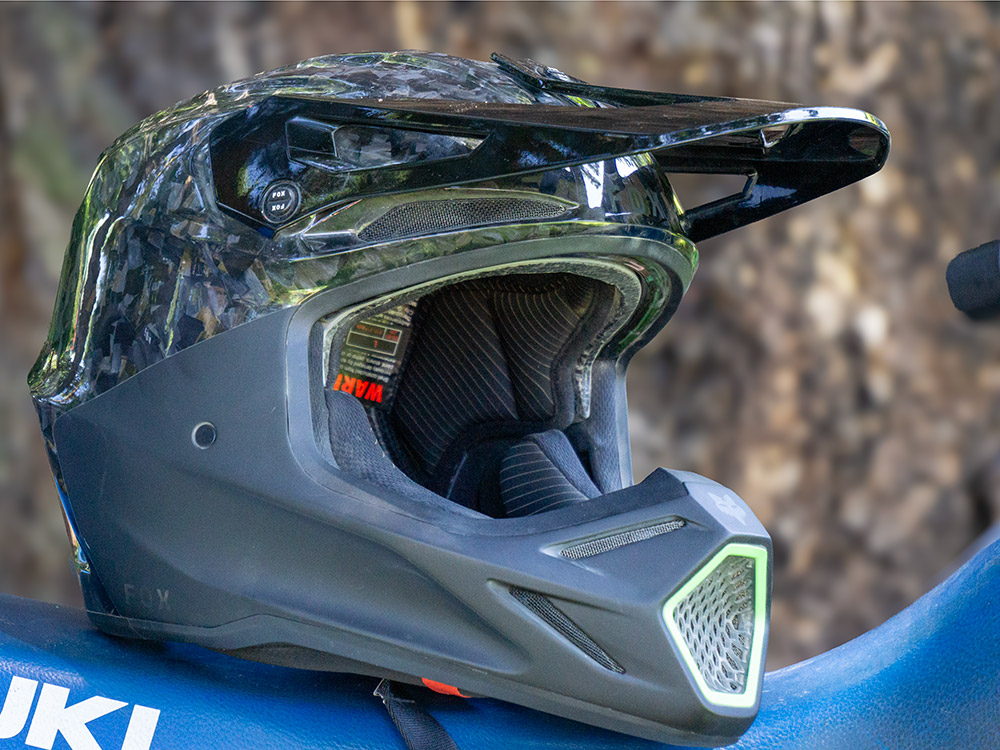
The helmet I’m reviewing here is the $649.95 V3 RS 50th Limited Edition Helmet (above), constructed from carbon fiber, plastic, and multi-density impact absorption layers similar to styrofoam, but specifically known as polystyrene. The new Mips technology layer used in the V3 RS helmet is a new system known as the Mips Integra Split impact protection system. The company that makes the technology has adopted “Mips” as its corporate brand name. I did an in-depth story on the technology a few years ago for another publication, but I’ll give a thumbnail of how the tech works below.
Mips Technology: What It Does, How It Works – And Why

The very short version of the Mips story is this: Years ago, mechanical engineer Peter Halldin began research into how helmets could better protect our heads in a crash, and basically came away with this central conclusion: A lot of head and neck injuries suffered by people wearing helmets were not due just to the blunt force of an impact, but to the violent rotation of the wearer’s head (and neck) in a crash. Most helmet wearers don’t crash squarely into a surface; they usually impact it at an angle, and the subsequent force tends to wrench the skull and neck in a rotational direction over a very short period of time (as in fractions of a second). What Halladin came up with was a very thin, very light “slip layer” – that yellow layer (below) inside most Mips-equipped helmet – between the helmet and the wearer’s head.

When an impact occurs, the Mips slip layer allows the helmet to both absorb the impact and also rotate around the wearer’s head for a brief moment (above), reducing the severity of an off-axis impact on the neck and brain, which is literally floating inside your skull like an encased water balloon. Move the brain balloon too fast in any direction and injuries can range from a concussion to brain bleeding to a fatal subdural hematoma. The Mips layer in Mips-equipped helmets essentially allows the helmet to work better in a crash without a radical redesign of the whole helmet.
READ MORE: You Can Win Big at the Overland Expo Foundation Raffle!
Extensive research by Halldin and his team – including on cadavers – helped refine the system so that it effectively reduced the incidence of severe injury while also feeling like wearing a “regular” helmet. Mips technology, often denoted by a small yellow “Mips” sticker on the helmet (above), is now present in a huge number of helmets designed for motorcycle riders, cyclists, skiers, boarders, equestrians, and other common sporting activities that involve potential head injuries in a crash. Be advised: Wearing a helmet, even with Mips tech, is no guarantee of an injury-free crash, the tech is designed to reduce the severity of an injury. Always ride and play within your limits.
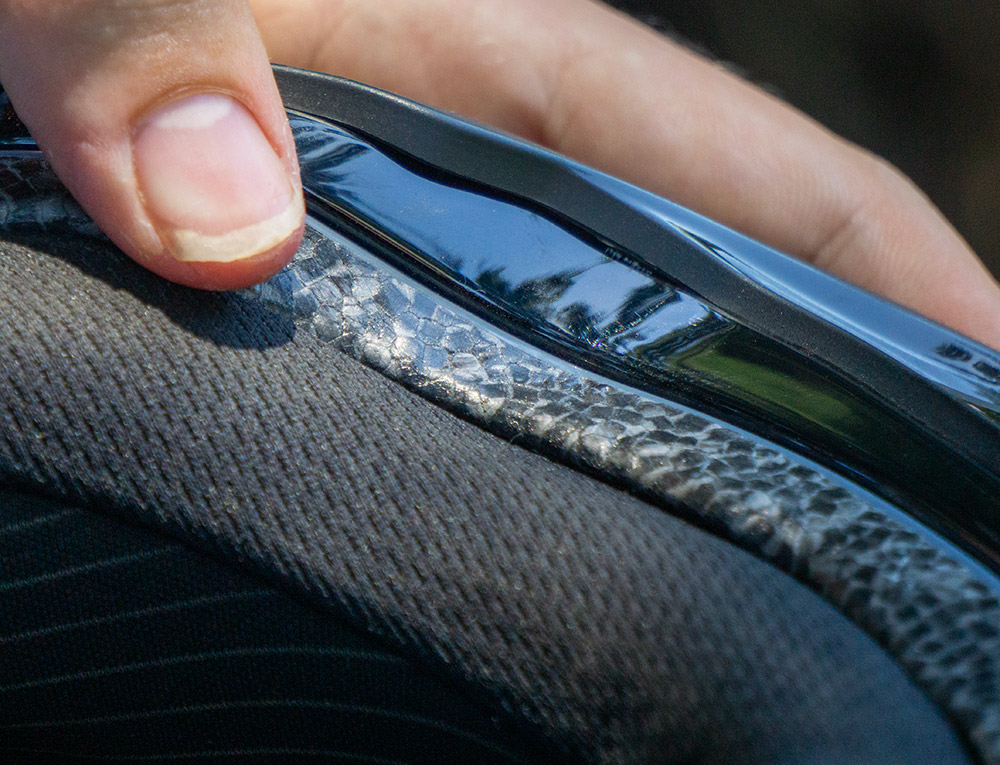
In this image, the Mips layer is at its normal position. Photo by William Roberson
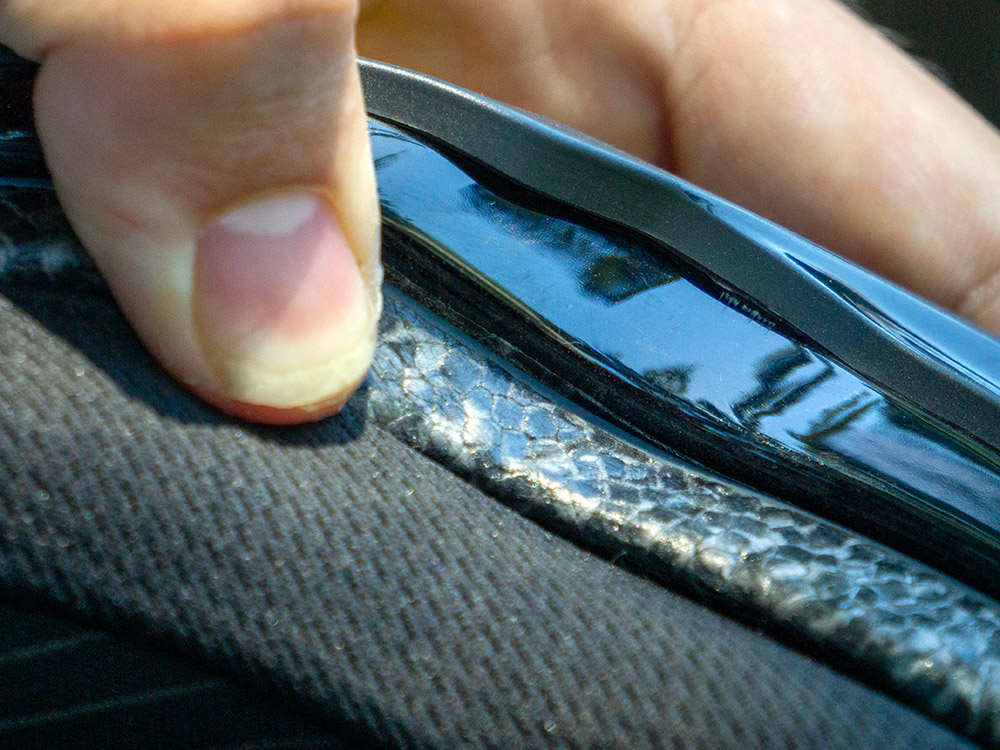
In a crash, the Mips layer in the V3RS allows the inner shell to rotate slightly, taking stress off the neck. Photo by William Roberson
The Mips Integra Split impact protection system in the Fox V3 RS helmet is the latest evolution of the technology and features several Mips layer sections joined together with special fasteners that allow for more sophisticated movement and better force absorption. The Integra Split layers sit between impact absorption layers within the helmet (see images above), allowing them to move upon impact. Other iterations of Mips (there are seven total) typically places the slip layer between the helmet’s tough outer shell and the interior energy absorption layers. But again, when wearing V3 RS, it works and feels like a normal moto helmet.
In a conversation with Mips principals for this review, a spokesperson said that getting Mips technology into more contact-intensive professional sports, such as American football, is an ongoing endeavor but has not happened so far due to regulations and myriad other factors, but they continue to work towards that goal.
Clarifier: Who owns Fox Racing, anyway? And what about Fox Suspension?
Why the “50th Limited Edition” label? Fox Racing (aka Fox Head Inc.) was founded in 1974 by Geoff Fox, making 2024 the company’s 50th year in operation. In 2014, Fox Racing was purchased by Altamont Capital Partners, who then sold it to Vista Outdoor for $540 million in 2022. Fox joins brands like Bell, Bushnell, Camelbak, Tasco, e-bike maker Quietkat, Camp Chef, and over two dozen other outdoor and hunting-related brands in the Revelyst group, which is under Vista Outdoor’s large corporate umbrella.
Fox suspension equipment for vehicles is made by Fox Racing Shox, which is operated by Fox Factory Inc., a public company (FOXF) formed by Geoff Fox’s brother, Bob Fox. To be clear, Fox Factory Inc. is not owned by Vista Outdoor. There will be a quiz later.
Fox V3 RS 50th Limited Edition Helmet Ride Review
For an MSRP of $649.95, the V3 RS 50th Limited Edition includes multiple peaks for different riding situations, cheek pad options for a more custom fit, a black chin trim option, and a black textile carrying bag with lined and zippered side pockets for carrying the peaks, goggles and other bits. The whole kit has an almost Apple product refinement to it. The V3 RS is available in six different color schemes with prices ranging from $599.95 to $699.95.

Photo by Dan Burton
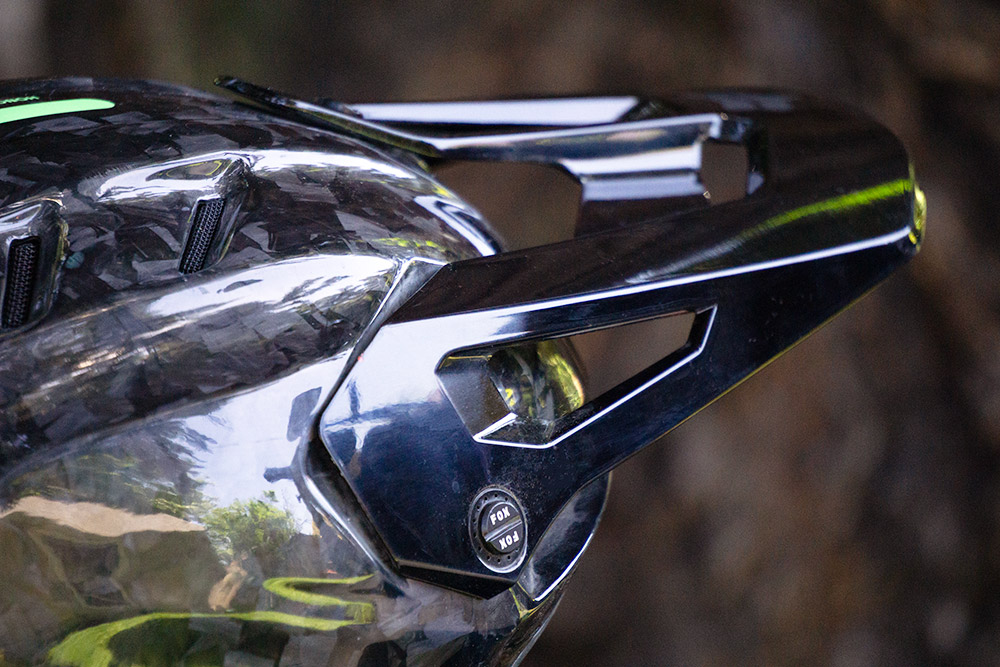
Photo by William Roberson

Photo by William Roberson
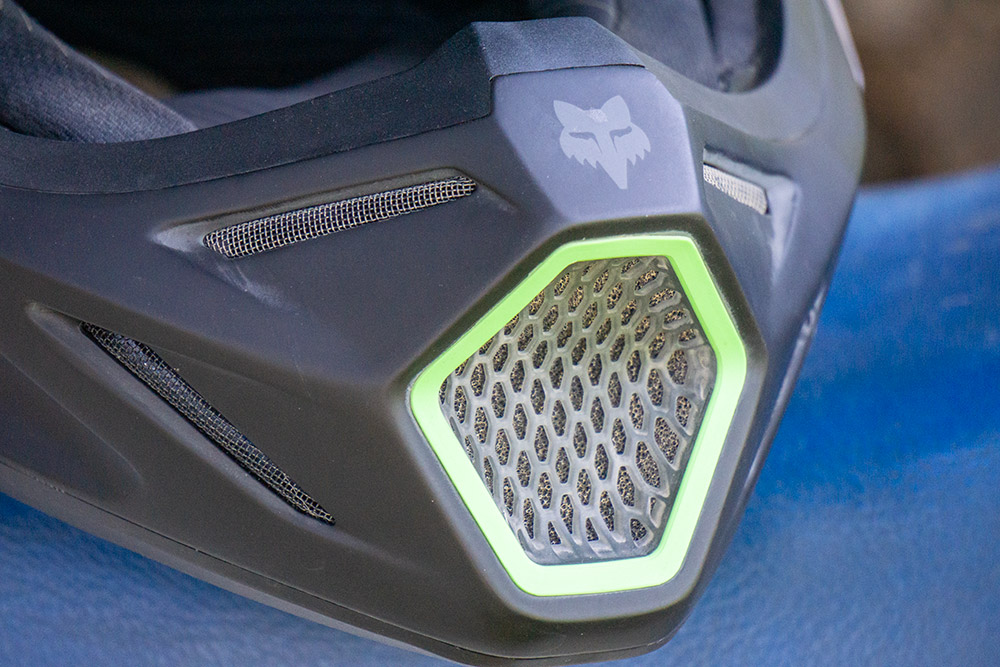
Photo by William Roberson

Photo by William Roberson
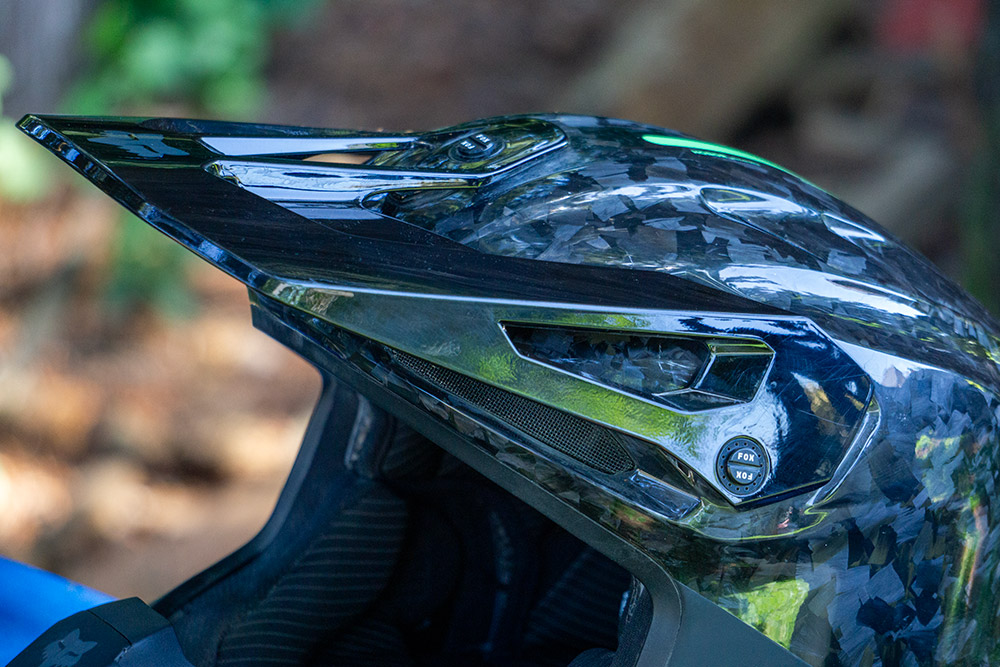
Photo by William Roberson
To be clear, the V3 RS 50th Limited Edition helmet is a dedicated motocross (or “MX”) helmet, not a purpose-built street riding helmet. But for adventure and dual-sport riders such as myself, there is a lot of crossover between MX and ADV riding gear, and the V3 RS works fine as a street helmet and is a very safe choice. It can also accept comms systems, such as the Cardo Packtalk Edge I had installed in it. However, it does not have an integrated face shield, so I wore Fox MX goggles ($34.95) that fit over my prescription eyeglasses while wearing the helmet.
The helmet itself consists of an angular grey and black layered carbon fiber shell with a green chin screen that can be subbed out for a black screen that is included. The plastic motocross peak/visor is mounted as stock, with longer, tinted, and shorter options included that can be swapped by loosening three simple mounting points. The interior padding includes a hydration hose routing loop and hooks, and the cheek pads are the quick-release types with red pull loops to allow EMTs to carefully remove the helmet in an emergency. The helmet, while very light, feels, works, and looks like the high-quality kit we expect from a brand like Fox, who have been making helmets for professional racers for decades.
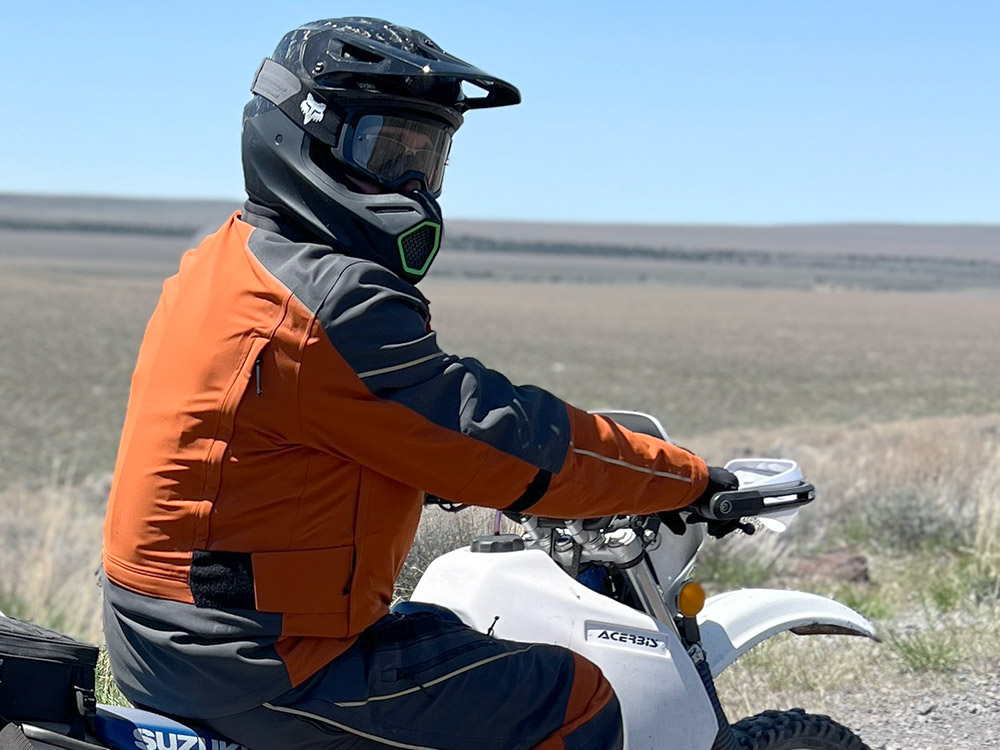
On the head, the V3 RS is very light thanks to the carbon fiber construction, and despite the sophisticated Mips technology inside, goes on and off easily and feels like most any helmet. It fit my somewhat oval head very well, with just the right amount of firmness. I did not need to modify the cheek padding with the included optional pads. All of the interior padding snaps in and out for washing.
READ MORE: Gear Showcase: Summer Moto Gear
I first wore the V3 RS on a day-long street ride up through the Ortega Highway in Southern California to Lake Elsinore aboard a 2024 Triumph 1200XE Scrambler (below). The V3 RS was very comfortable, but with no face shield, it is noisy at highway speeds of course. Also, bits of road debris and small insects can sneak past the goggle/chin section gap, but it was only an occasional annoyance. Otherwise, it was comfortable to wear all day. I alternated between wearing earplugs on the highway and drowning out city noises with music from the Cardo Edge’s JBL speakers mounted next to my ears.
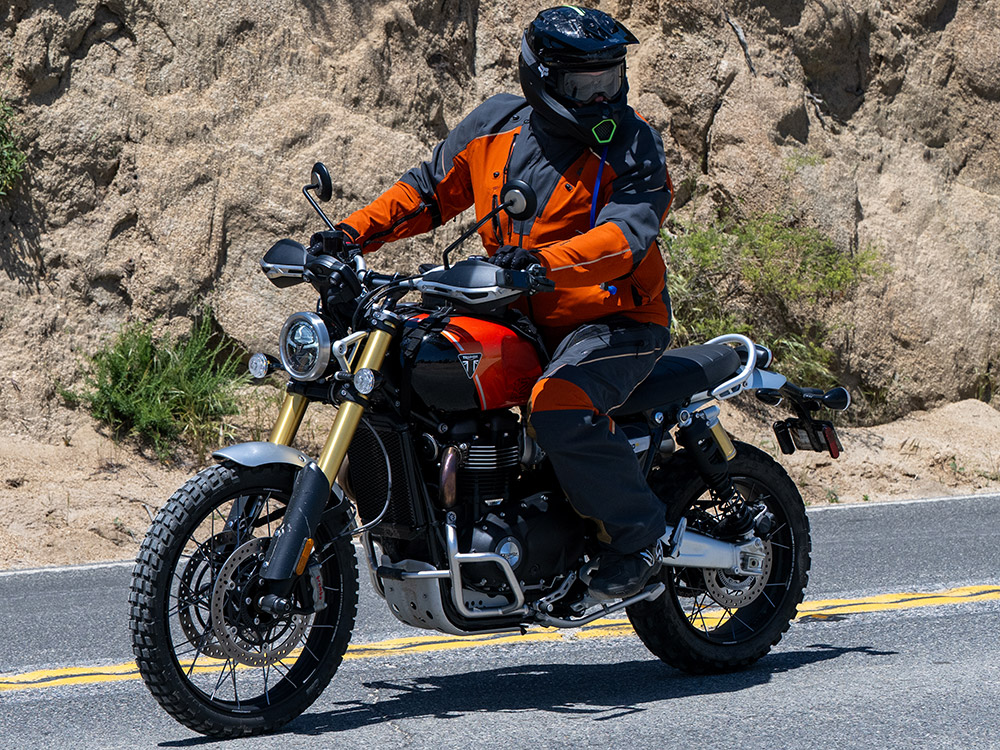
Next, I wore the V3 RS on two days of riding my Suzuki DR650SE dual-sport off-road in southeast Oregon’s high desert (below), where sections of the new Oregon BDR route are located. This outing included wide temperature variations, challenging riding, long hours in (and out of) the saddle, and a lot of dust. Throughout the California and Oregon riding, the V3 RS was comfortable and, thankfully, lightweight. The long MX visor effectively blocked the low sun as the day wore on, and I never developed any soreness or hot spots that can come with wearing a tight-fitting helmet for hours on end. Fortunately, I did not test the Mips system or impact absorption of the V3 RS in a crash, which is not always the case.
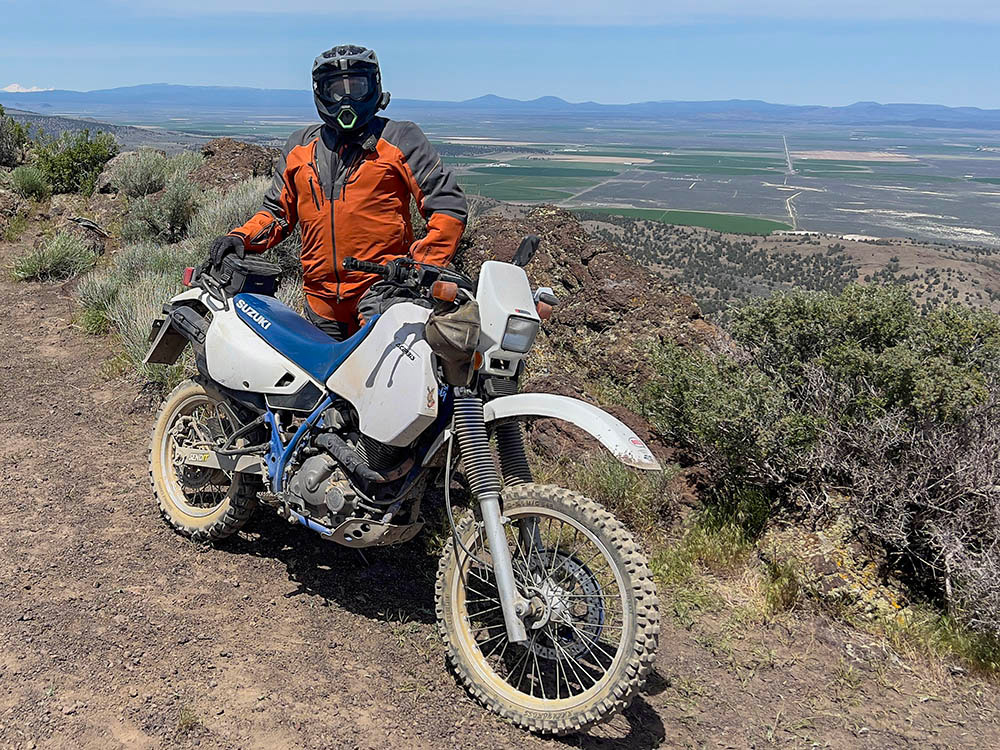
That was my experience, at least. Your fit may be different depending on how your cranium interfaces with the helmet interior, which is true for any helmet on the market, but at least Fox included some fitment options that might work better if you have an issue. My advice: Try on a helmet if possible at a dealer or gear shop to check the fit, and get the return policy in writing. If you buy any helmet online, make sure you have the right to return the helmet if it does not fit right (and do keep the box and packing bits).
What to know:
- MODEL: Fox V3 RS Mips-equipped Motocross/ADV helmet
- MATERIAL: 60% carbon, 30% EPS, 10% EPP
- CERTIFICATIONS: DOT and ECE22.06 standards
- KEY FEATURES: MDEPS™ EPS liner protects by spreading the forces of impact across a wider surface area.
- MSRP: $649.95


